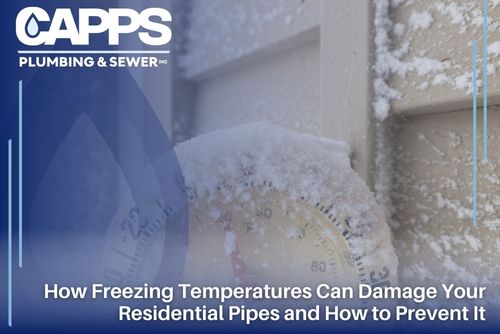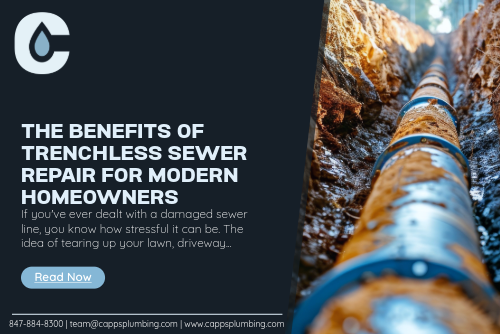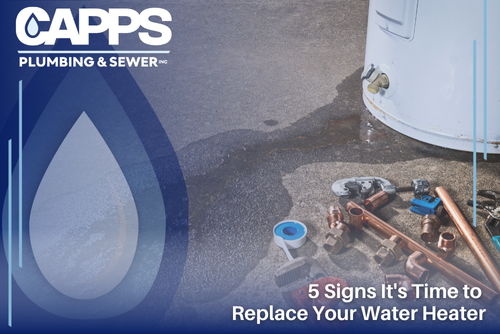Freezing temperatures can really harm your homes, especially your plumbing. When water freezes, it takes up more space. This can cause your pipes to get damaged, leading to leaks or even big bursts. This blog shares essential tips to help you keep your home safe from damaging frozen pipes.
Understanding the Risk of Freezing Temperatures
Most people know that water freezes when it’s very cold. However, people may not link this basic fact to the pipes in your homes. Plumbing can freeze if it is exposed to cold air for a long time. This is especially true for pipes in spots like attics, crawl spaces, and exterior walls. The risk of freezing increases in severe weather or if your home is not heated and is left empty.
Knowing more about why pipes freeze can help you protect your home better.
The Science Behind Pipe Freezing
The freezing point of water is 32 degrees Fahrenheit (0 degrees Celsius). When the air temperature around a water-filled pipe reaches this point, the amount of heat in the water goes into the colder air. As the water loses heat, its temperature falls, and it turns from liquid to solid – ice.
It is important to know that water expands by about 9% when it freezes. This expansion creates a lot of pressure on the pipe walls. Metal pipes can handle some pressure, but the force from the expanding ice can be much stronger. This can cause cracks, leaks, or even bursts, especially at weak spots like joints or bends.
Why Frozen Pipes Are a Problem
The severe weather increases the chance of frozen pipes, especially in older homes. These homes often have less insulation or plumbing in weak spots. Even homes that are well cared for can face frozen pipes when the temperature drops suddenly or stays cold for a long time.
The risk of damage from frozen pipes is real and can cost a lot of money. Whether it’s small leaks or big bursts, these problems can mess up your water supply and cause water damage. They can lead to expensive repairs, too. By taking steps to prevent this issue and knowing what to do if pipes freeze, you can protect your home and avoid stress.
The Consequences of Frozen Pipes
Frozen pipes are not just annoying; they can also cause a lot of damage and cost you money. Leaks can slowly harm walls and ceilings. Bursts can lead to a flood of water. This can hurt your home badly.
The longer the water flows from a frozen pipe, the more damage occurs. It is important to understand how the damage happens. This will help you see the serious effects of this winter weather issue.
From Leaks to Bursts: The Pathway of Damage
The trouble from a frozen pipe often starts off small. The ice inside expands and creates pressure, which can lead to tiny cracks in the pipe. These cracks may cause a slow drip. At first, you might not notice it, but over time, that drip can result in water damage. The water from the drip can soak into nearby materials. This can lead to problems like mold growth, wood rot, and weak structures.
If the pressure isn’t taken care of, the cracks can get bigger, and the pipe can burst. When a pipe bursts, it can let out gallons of water into your home in just minutes. This can cause much damage to your flooring, walls, furniture, and personal items.
The Financial Impact of Water Damage in Homes
Water damage from frozen pipes can lead to serious costs. The expense to repair the damage can change a lot based on how bad it is and what materials were hurt. Even a small leak can cost a lot of money. This includes replacing things like drywall, insulation, and flooring.
If there’s a big burst, the costs can be much higher. You might need experts to help fix the water damage and stop mold from growing. Insurance might pay for some of the costs, but homeowners may still face a large bill due to deductibles and policy limits.
Identifying Frozen Pipes Early
Finding frozen pipes early is important to reduce harm and costs. When you know the warning signs, you can act quickly to stop a small problem from getting bigger.
Staying alert can really help protect your home.
Warning Signs Your Pipes May Be Frozen
Reduced or no water flow: If you turn on a faucet and only get a little or no water, it might mean you have a frozen pipe. Check other faucets in your home to see if this problem is just in one place or everywhere.
Frost on pipes: If you can see frost on exposed pipes, especially in cold areas, it’s a strong sign that freezing has happened.
Strange sounds: If you hear gurgling noises from your pipes when water should flow easily, it could mean there is a blockage caused by ice.
Unusual odors: Bad smells coming from drains or faucets could mean there is a frozen drain line or sewer pipe.
Immediate Steps to Take if You Suspect Frozen Pipes
Shut off the main water supply: Find the main water shut-off valve and turn it off right away. This will stop the water flow and help reduce damage if a pipe bursts.
Open affected faucets: Turn on the affected faucets for both hot and cold water. This will ease pressure and help water flow again when the pipe thaws.
Apply heat: Use safe ways to warm the frozen pipe slowly. You can use a hairdryer, a space heater, or cover the pipe with towels that are wet with warm water. Never use an open flame, as it can start a fire.
Insulating Pipes: What You Need to Know
Pipe insulation helps slow down how heat moves from the pipe to cold air. This simple measure can keep your pipes from freezing.
Here is what you should know about pipe insulation:
Types of insulation: There are many types of pipe insulation, like foam pipe sleeves, fiberglass wraps, and heat tape. Pick the type that fits your needs and budget.
Installation: Most pipe insulation is simple to install on your own, but if you are not sure, you can hire a plumber to help.
Prioritize vulnerable areas: Make sure to insulate pipes in areas that are not heated, such as attics, crawl spaces, basements, and exterior walls.
Emergency Responses to Frozen or Burst Pipes
Even if you take steps to prevent problems, emergencies can still occur. If you have a burst pipe or can’t safely thaw a frozen pipe, it’s very important to act quickly. Doing this helps reduce damage and keeps you safe.
Always remember that your safety is the most important when it comes to an emergency.
Thawing Frozen Pipes Safely
Start at the faucet: If you find the frozen spot, begin to thaw at the faucet and move toward the blockage. This helps the melted water drain easily.
Avoid open flames: Do not use an open flame, like a blow torch, to thaw frozen pipes. It can cause a big fire risk.
Monitor closely: As you use heat, keep an eye on the pipe for leaks. If you see water leaking, turn off the main water supply right away.
Protect Your Pipes From Freezing
Protecting your pipes from freezing weather is essential. Doing this can save you money and trouble later on. You should know the risk of frozen pipes. Look out for warning signs and take steps to prevent issues. Check your pipes often, make sure they are insulated well, and ask for professional help when needed. It is key to protect your plumbing system. Do not wait until something bad happens—take action now to avoid freezing and bursting pipes. If you have questions or need help with frozen pipes, contact Capps Plumbing today!






